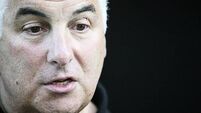Clinic to help cut hospital’s occupancy rate
The pre-operative assessment clinic (PAC) means patients who are scheduled for surgery are assessed weeks in advance, eliminating the need to stay in hospital on the night prior to surgery.
This in turn reduces bed occupancy rates by patients undergoing elective surgery. Almost 99% of patients attending for elective surgery at MUH are admitted on the day.
Patients attending the PAC — which occupies a refurbished ward — are briefed on the details of their planned procedure giving them more time to digest the implications.
Doctors at MUH say patients who attend the clinic are less likely to develop post-operative complications.
Although the new clinic only opened formally this week, the PAC model has been operating in MUH since 2009 and has, according to the hospital, reduced the likelihood of having a procedure cancelled on the day of surgery. A spokesperson for the hospital said the cancellation rate was now less than 1%.
Theatre utilisation is also more efficient.
The PAC was initially located in the outpatient department but transferred in 2010 to a temporary location in the main hospital to enable its expansion.
The new PAC is purpose-built and twice the size of the old clinic. Patients with more straightforward complaints are assessed by nurses while more complex patients are seen by consultant anaesthetists.
An average of 40 patients are pre-assessed a week while about 50 patients a week undergo surgery.
The hospital is aiming to match pre-assessment with theatre numbers.
The volume of patients pre-assessed has increased by 150% between 2009 and 2011.
Jerry Buttimer TD, chair of the Oireachtas health committee, performed yesterday’s opening.
He said the clinic was a good example of how new models of service could help deliver more efficient care at a time of reduced resources.
The hospital’s CEO, Sandra Daly, said the unit’s opening “highlights the commitment from the board of governors to MUH’s role as a teaching hospital and reaffirms the hospital’s dedication to its culture of unique patient- centred care”.













